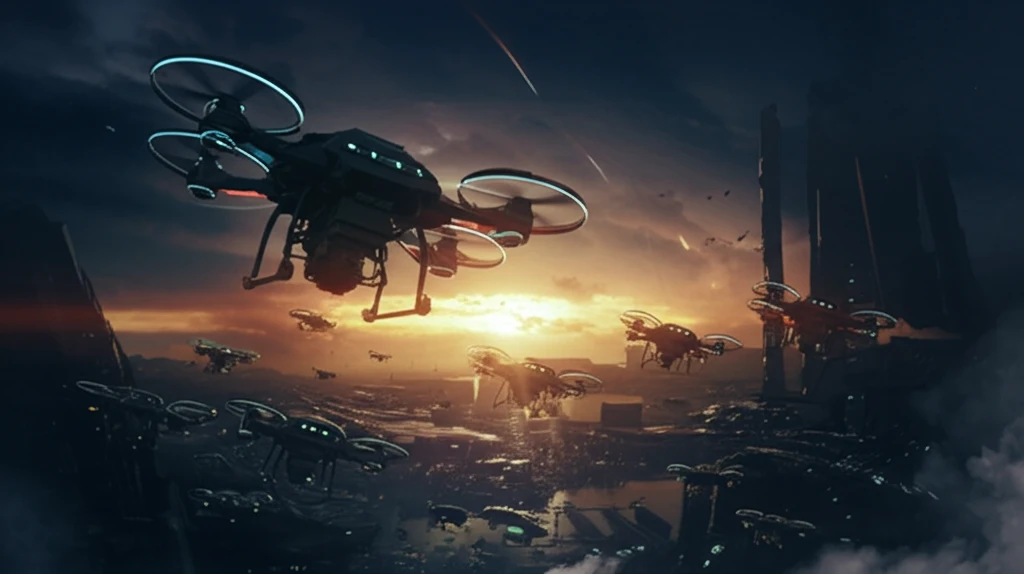
The Future is Flying: How Drone Swarms Inspired by Nature Will Change Everything
"Unlocking the secrets of pigeon flocks to revolutionize drone technology and beyond."
Imagine a sky filled with hundreds of drones, moving in perfect synchronization, effortlessly navigating complex environments, and working together to achieve a common goal. This isn't science fiction; it's the future of drone technology, and it's being inspired by one of nature's most elegant examples of collective intelligence: bird flocks.
For years, scientists have been fascinated by the seemingly effortless coordination of bird flocks. How do hundreds or even thousands of birds manage to fly in such close proximity without colliding? How do they make collective decisions about where to go and what to do? The answers to these questions are now being applied to the development of drone swarms, promising to revolutionize industries ranging from agriculture to disaster response.
This article delves into the exciting world of drone flocking, exploring the scientific principles behind it, the technological advancements that are making it possible, and the potential applications that could transform our world. Get ready to take flight and discover how nature is inspiring the next generation of intelligent machines.
The Wisdom of the Flock: Unveiling the Secrets of Bird Coordination

At the heart of drone flocking lies a set of simple yet powerful principles that govern the behavior of individual agents (drones) within a collective. These principles, often referred to as flocking rules, are based on observations of natural flocks and swarms and can be summarized as follows:
- Velocity Correlation: Each drone adjusts its speed and direction to match its neighbors, creating a cohesive flow.
- Leader-Follower Interaction: Some drones act as leaders, guiding the flock towards a desired destination, while others follow. This is determined by a "leadership hierarchy".
- Hierarchical Leadership Network: A multi-tiered leadership system that allows for stable group dynamics even in the absence of one or more leaders.
The Sky's the Limit: Embracing a Future Shaped by Drone Swarms
Drone flocking is more than just a technological marvel; it's a paradigm shift in how we approach complex problems. By harnessing the power of collective intelligence and bio-inspired design, we can create drone systems that are more efficient, adaptable, and resilient than ever before. As research continues and new applications emerge, get ready to witness the transformative potential of drone swarms as they take to the skies and reshape our world.
